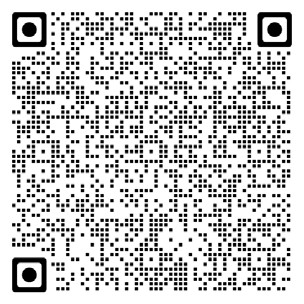mibusiness
Artificial Intelligence in Eye Care Collaboration, Not Blind Acceptance

WRITER Inbal Rodnay
The integration of artificial intelligence (AI) in eye care offers both opportunities and challenges. In this article Professor James Armitage and Dr Jamie Chew reveal how AI can enhance clinical practice without replacing professional judgement, highlighting its potential as a complementary tool for diagnosis, efficiency, and patient engagement.
Throughout my career, I’ve been dedicated to facilitating the practical application of advanced technology, guiding professionals across Australia and New Zealand in adopting essential tools and staying abreast of rapid advancements, particularly in AI. Recognising the imperative for continuous learning in this evolving landscape, I regularly engage with experts across diverse fields.
In clinical settings, AI’s role is best understood as a supportive instrument, enhancing, rather than replacing, clinical reasoning. To foster a truly collaborative approach, healthcare practitioners must actively assess all AI outputs, ensuring they augment, not supplant, their own expertise.
AI offers significant advantages in optometry and ophthalmology:
Diagnostic support. AI can function as a valuable diagnostic aid, potentially highlighting issues that might be overlooked by clinicians.
Enhanced confidence. It provides a ‘second opinion’, bolstering clinician confidence in borderline cases.
Efficiency gains. AI automates timeconsuming tasks like notetaking and referral letter generation, freeing clinicians to focus on patient engagement.
However, the responsible integration of AI is paramount. It should be viewed as a tool to assist, not dictate, clinical decisions. A thorough understanding of its capabilities and limitations is essential to ensure AI complements and strengthens the clinician’s role in delivering high-quality patient care. This human-centric approach underscores the necessity of a balanced integration of technology, where the clinician remains at the centre of patient care.
Professor James Armitage, Head of Vision Science at the School of Medicine at Deakin University, has a keen interest in research and education surrounding AI integration in clinical practice. He stresses the importance of clinicians critically evaluating AI outputs, and explains how AI tools can enhance, not replace, human judgement. To gather insights on these critical areas, I reached out to Prof Armitage for his expert commentary.
Prof Armitage’s perspective is clear: AI is a tool, a powerful adjunct, designed to enhance clinical decision making.
“There is a need for the human to triage what the machine is telling us, emphasising the vital role of clinical judgement in interpreting AI outputs. This point cannot be overstated; the medicolegal responsibility for patient care ultimately rests with the clinician, not the algorithm.”
ACCURACY LIMITATIONS OF AI
A central concern in my discussion with Prof Armitage was the ‘black box’ nature of many AI systems. Black box AI is where you have an input and an output. Inside the box, developers can see the individual algorithms, however it’s difficult to trace every data point due to the sheer volume and interaction of these calculations. This resonates deeply, as the inability to trace the AI’s reasoning undermines the very foundation of trust necessary for clinical application.
Furthermore, he pointed out that AI systems are trained on specific datasets, and their accuracy can decrease significantly when presented with data that deviates from that training. For example, AI designed to detect diabetic retinopathy might claim a 93% accuracy rate. However, this high accuracy is validated using a specific dataset. When applied to real-world patient data, which can vary significantly in image quality, patient demographics, and other factors, the AI’s performance can drop considerably.
“If an AI system is trained on a particular dataset, when you deviate from that dataset and your patient is not representative of the images that it was trained on, the accuracy and precision might be quite different,” Prof Armitage explained.
This means that the AI’s reliability decreases substantially when faced with data outside of its training parameters, highlighting the importance of understanding the limitations of AI systems in diverse clinical settings. It is also important that the datasets that AI uses are diverse, so they can function correctly with all patients.
THE PROBABILITY PARADOX
Prof Armitage explained that large language models (LLMs), such as ChatGPT, produce output that sounds very human-like but are operating on probability. They predict the next most likely word, based on the dataset that it is querying, not necessarily the most accurate or evidence-based answer. “These models are working by listing what is the next most probabilistic word after the preceding ones. It’s not weighing up everything about the patient that is in your chair right now.”
Prof Armitage consistently reinforced the idea that AI should function as a decision-making resource, not a decision maker. The ideal synergy, he believes, lies in the collaboration between AI’s analytical precision and human clinical reasoning.
“I think that’s where the marriage works really well,” he stated, “where you have an AI system with all of its ability to detect very subtle signs, coupled with a human who has enough information from that AI system, and their ability to understand the patient and the patient’s specifics; this make a really good diagnosis. AI should be here to assist and guide clinicians, rather than be a replacement.”
SPEED, ACCURACY, AND PATTERN RECOGNITION
A significant strength of AI, as Prof Armitage pointed out, lies in its ability to analyse vast datasets with unparalleled speed and accuracy.
“AI excels at identifying patterns and correlations within large volumes of data that would be impossible for a human to process, especially when considering the sheer volume of scans and patient data across diverse geographical locations,” he explained.
He emphasised AI’s capacity to quickly compare patient data, such as scans, against extensive databases, identifying subtle anomalies and potential risks that might escape human detection. AI advances in image processing are also vital advances that are already incorporated into commercial devices.
“In the context of OCT (optical coherence tomography), AI routines that reduce noise in the scan allow for enhancement of the true signal; producing a clearer image for the optometrist to assess, and providing better data for the algorithms that derive parameters, such as ganglion cell layer thickness, or drusen volume.
“AI holds the power to elevate clinical reasoning. AI-generated decision-making aids, like heat maps, can highlight the presence of subtle anomalies that might escape the human eye.”
Moreover, AI can prompt clinicians to reevaluate their assessments, leading to more comprehensive patient evaluations.
“Having a tool like AI saying to us, ‘have a look at this OCT B-scan, there might be pathology present’, makes us then stop, reflect, and question: have I missed something?”
EDUCATING FOR THE AI ERA
A particularly vital element of Prof Armitage’s viewpoint is his emphasis on education. He believes future optometrists must be trained to engage critically with AI outputs. The probabilistic foundation of LLMs requires a nuanced approach, not blind acceptance. As discussed, LLMs, which are AI models trained on massive datasets of text to generate human-like text, operate on probabilities, meaning their outputs are not absolute truths but rather the most likely responses based on their training.
“University educators are training students how to interrogate the AI rather than passively say, ‘it said this, so it must be right’.”
EFFICIENCY AND REFINEMENT
Prof Armitage highlighted AI’s potential to refine referral processes. “AI can help us reduce unnecessary referrals. By analysing patient data and comparing it against established clinical guidelines, AI can help clinicians determine when a referral is genuinely necessary, ensuring that patients receive timely and appropriate care while also optimising healthcare resources. This ability to refine referrals is a key component to AI’s usefulness within optometry.”
Prof Armitage also highlighted the valuable time-saving potential that AI can bring into the clinic, especially in the function of patient information gathering.
“AI tools can seamlessly transcribe patient consultations, capturing every detail of the interaction. This would not only free up clinicians from the tedious task of manual notetaking but also allow them to focus entirely on the patient’s concerns. Records can show that proper patient education was provided, which is crucial if a patient later claims they were not informed about certain aspects of their care.
“Imagine being able to fully engage with the patient, maintain eye contact, and listen attentively, without the distraction of typing or jotting down notes. AI handles the transcription, summarising the key points, creating referral letters and organising the information into a structured format.”
THE MEDICAL SCRIBE
Ophthalmologist Jamie Chew is the founder and Chief Operating Officer of i-scribe, an AI-powered medical scribe designed to alleviate the administrative burden faced by healthcare professionals. Developed in-house by a team of Australian specialist doctors and engineers, one of the founders is a computer science engineer who helped develop i-scribe’s initial architecture. Uniquely, two of the doctor-founders are also skilled coders, ensuring that the platform was built with an in-depth understanding of medical workflows and a core focus on accuracy – an essential foundation for building trust in any AI-driven medical solution. i-scribe was initially created to address the letter-writing challenges faced by ophthalmologists. Today, it has expanded to serve a broad range of medical specialists, with growing adoption among optometrists as well.
A User-Friendly Workflow Enhancement
i-scribe is designed to streamline clinical documentation through real-time voice-totext transcription. The platform is accessed via the web, and the transcription process is initiated by the clinician speaking naturally as they conduct patient consultations. The system is customisable, allowing users to select specialty-specific templates and tailor the output to their preferences.
i-scribe’s functionality extends beyond simple notetaking. It can generate comprehensive patient summaries, which can be provided to patients for enhanced understanding and engagement. Additionally, it efficiently drafts referral letters and colleague notes, reducing the administrative burden on clinicians.
Privacy and Control
Importantly, i-scribe prioritises patient privacy by not storing any audio recordings; only the transcribed text is retained on secure servers for a maximum of 60 days.
And because i-scribe is intended to augment, not replace, clinical judgement, Dr Chew advises clinicians to review and edit the generated text to ensure accuracy before finalising any documents. This approach allows clinicians to maintain control over patient information while benefiting from the tool’s time-saving capabilities.
The goal is to free up cognitive energy, allowing clinicians to focus more on patient interaction and less on administrative tasks, ultimately “rehumanising the healthcare experience”, Dr Chew said.
All data processed by i-scribe is stored within Australia on a closed server, ensuring compliance with Australian healthcare regulations and data security standards. This is a crucial consideration for professionals when selecting an AI scribe, ensuring that patient information remains protected and meets Therapeutic Goods Administration requirements.
THE FUTURE IS HERE
Eye care’s future requires balancing AI capabilities with human expertise. While tools like i-scribe demonstrate AI’s administrative benefits, the technology’s true value lies in supporting – not replacing – clinical decision making. By adopting AI as an assistant rather than an autonomous system, practitioners can enhance care while maintaining the human connection.
Inbal Rodnay is a recognised leader in innovation with a focus on the practical application of AI in professional services. A corporate speaker and educator since 2017, she has presented to over 30,000 people, breaking down technical topics into practical examples that are highly relatable to a professional audience.
Visit inbal.com.au/optomto register your interest to attend her free webinar and/or receive her weekly video update.
